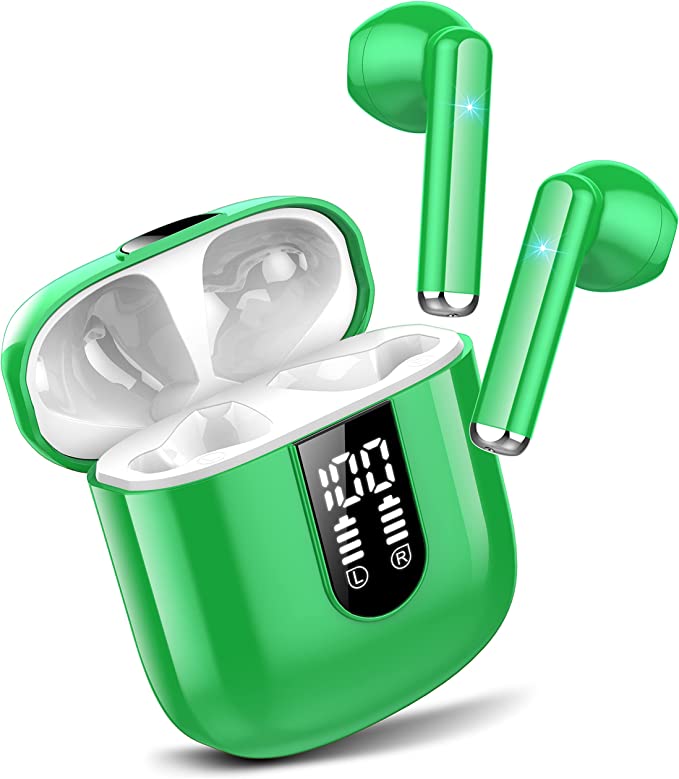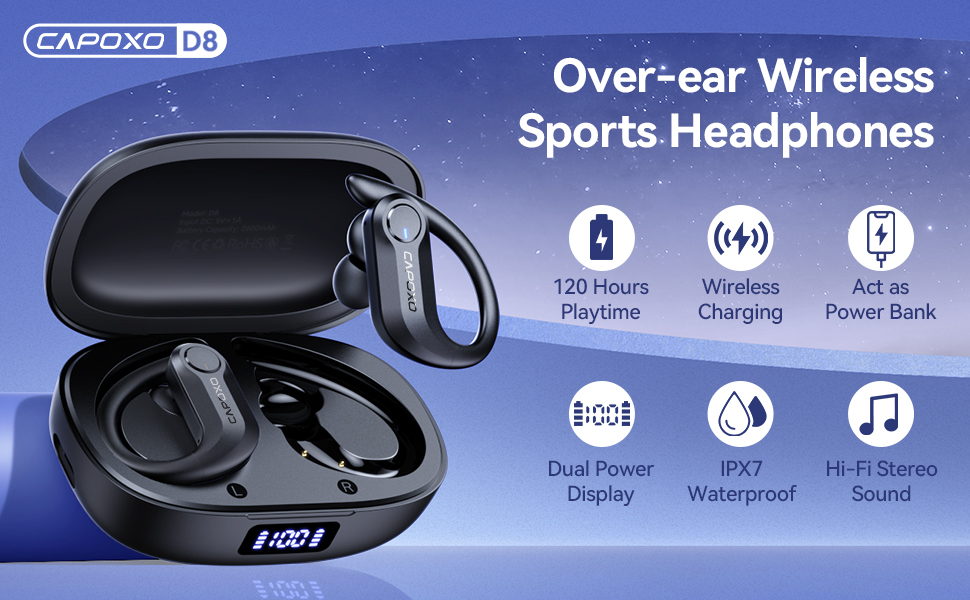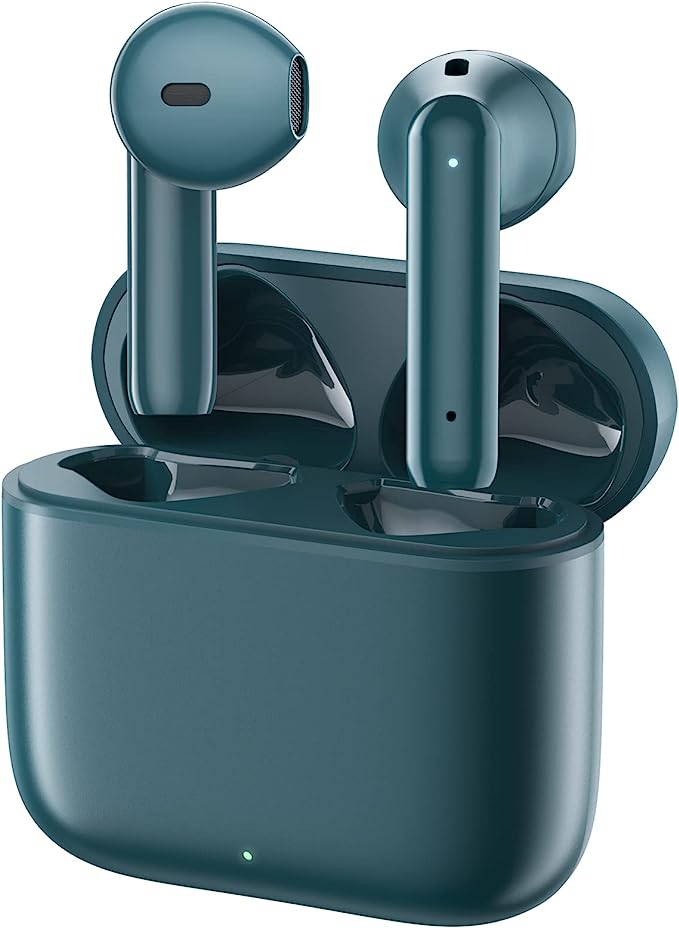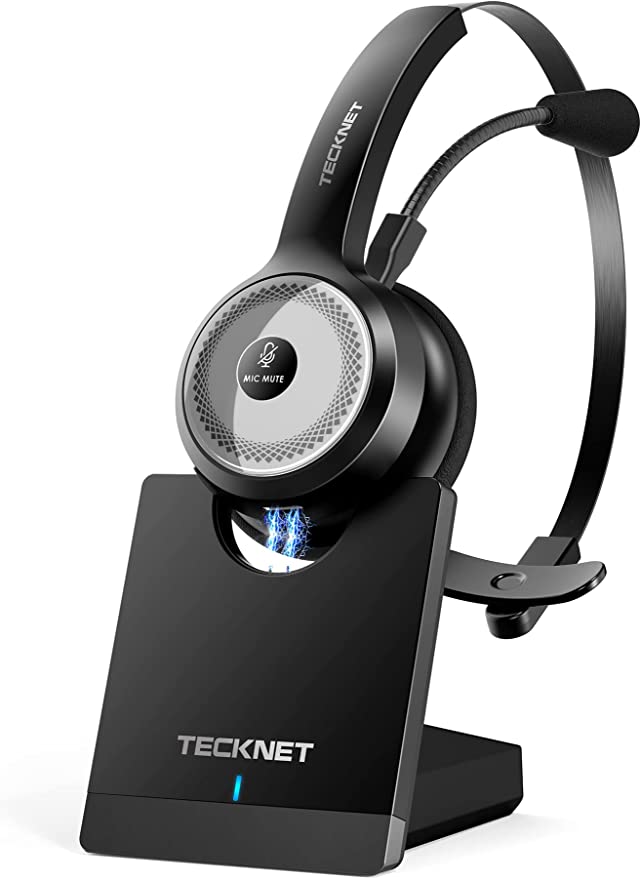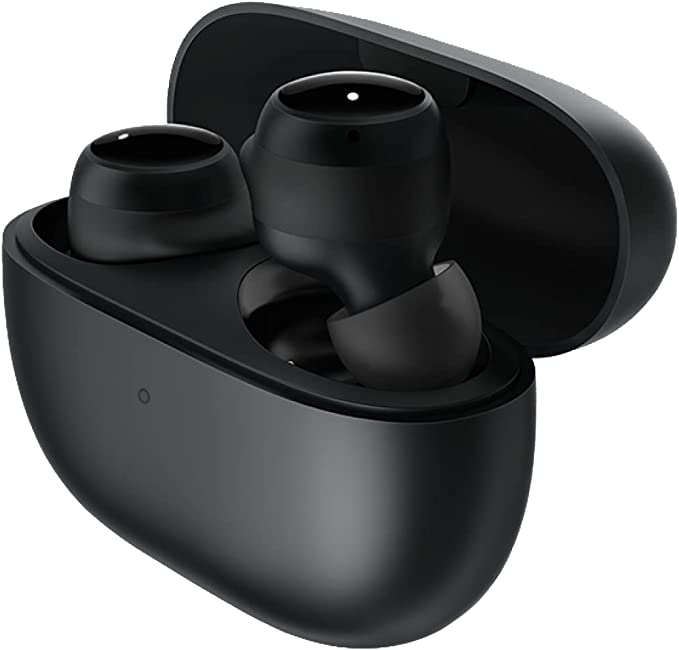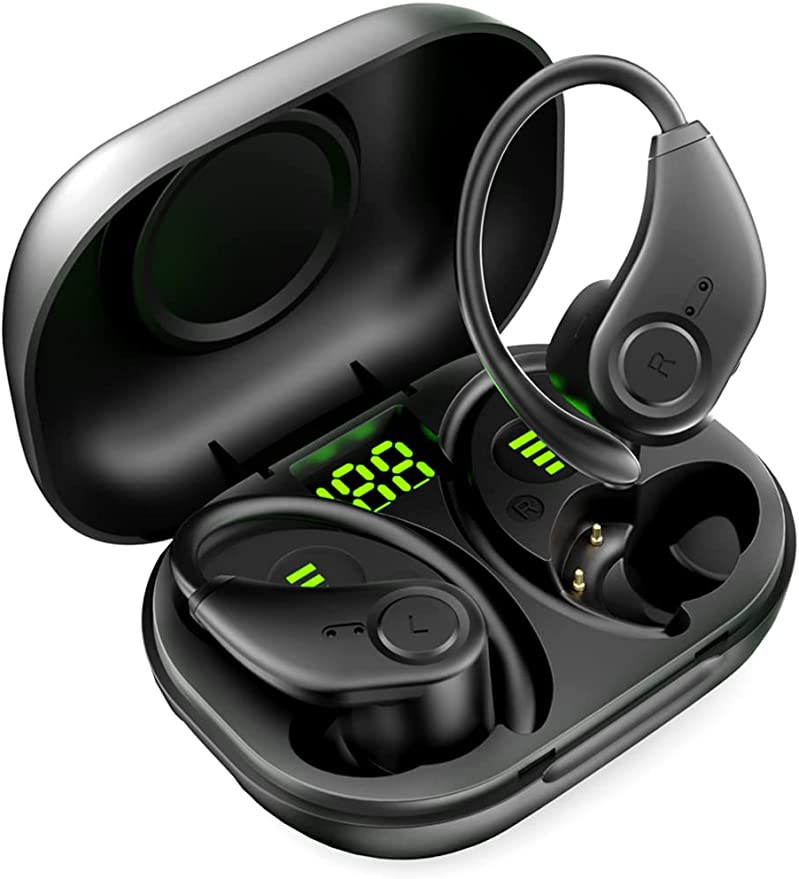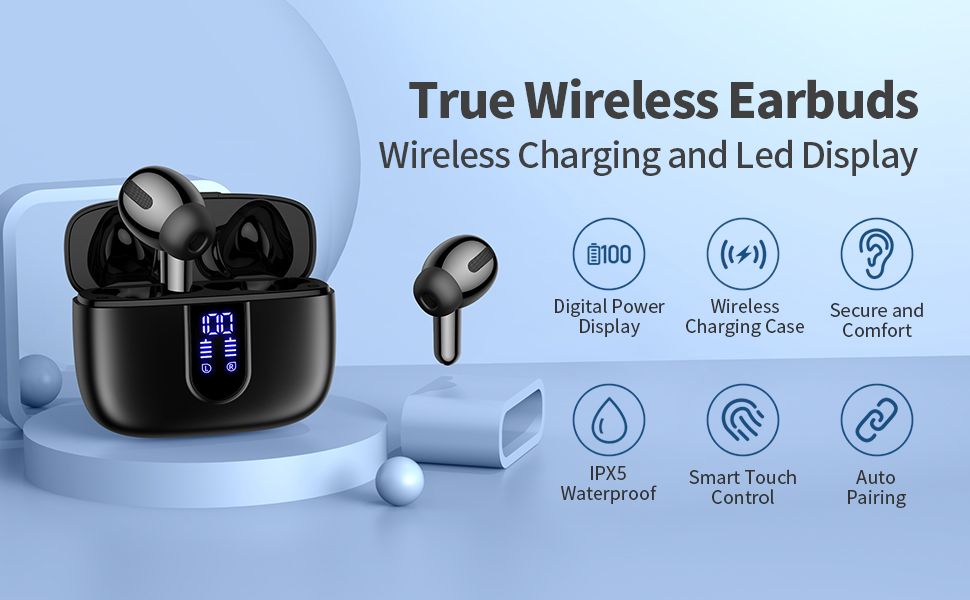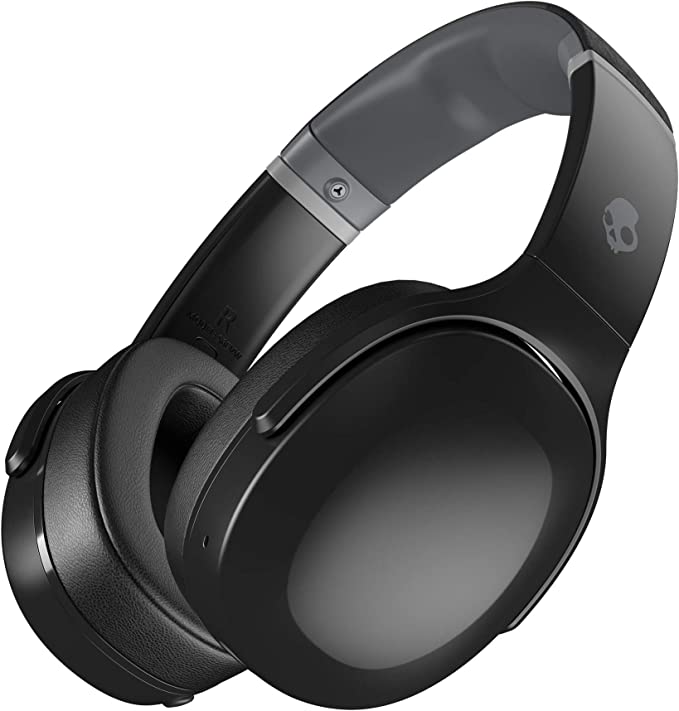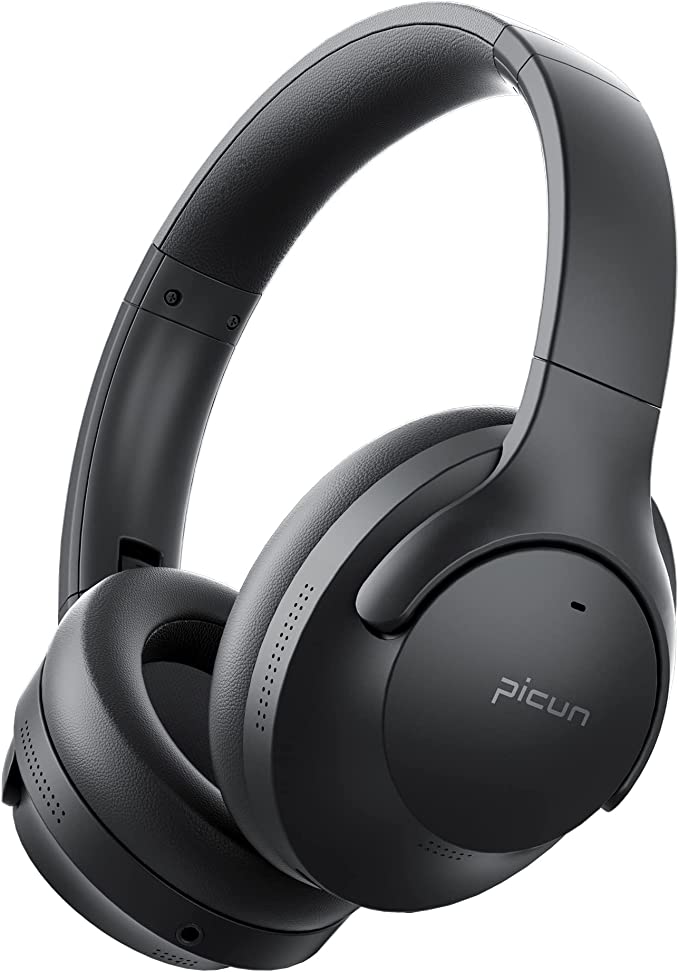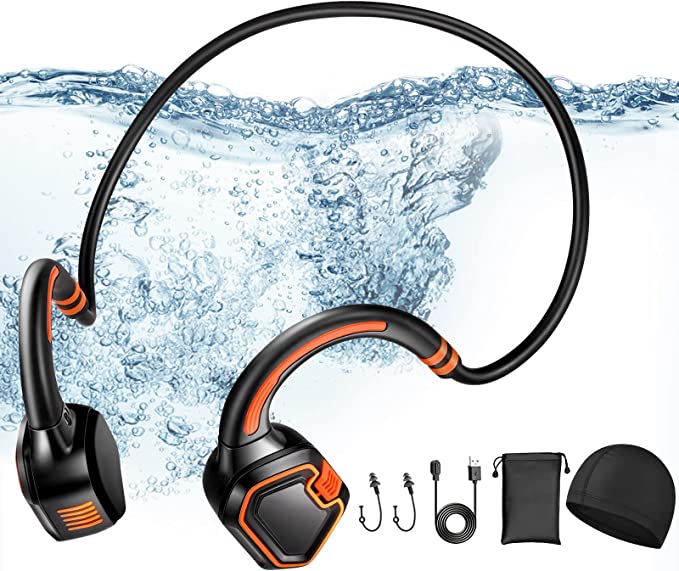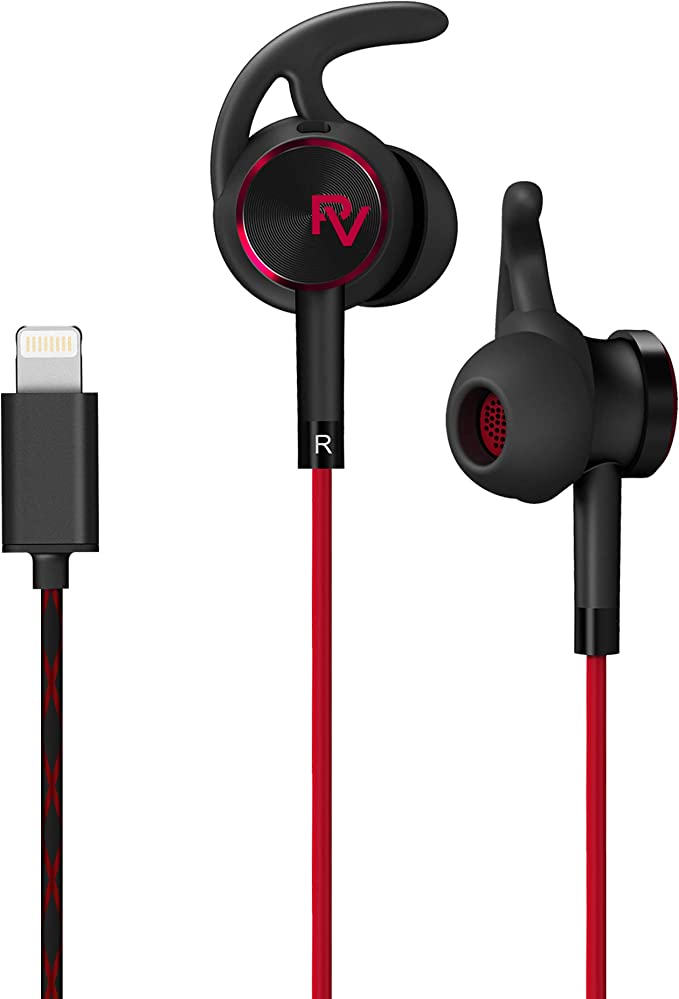The Simple Guide to POMUIC W23 Earbuds: Pairing, Controls & Troubleshooting
Update on Oct. 30, 2025, 3:32 p.m.
So, you’ve just unboxed your new POMUIC W23 wireless earbuds. You’re ready to “unleash the power of sound,” but the tiny, folded paper manual left you with more questions than answers.
You’re not alone. This is incredibly common.
Many modern gadgets, especially budget-friendly ones, pack in fantastic technology but come with instructions that are confusing or incomplete. You end up mashing buttons, wondering why only one earbud is connected, or how on earth to simply turn the volume down.
Let’s fix that. Welcome to the guide you wished came in the box.
We’re not going to “review” these earbuds. You already have them. Instead, we’re going to walk through exactly how to get them paired, master their controls, and understand what all that technology actually does for you.

1. The First 60 Seconds: Pairing Your W23 Earbuds (The Right Way)
This is the number one hurdle, and it’s the key to fixing that “only one earbud works” problem. The product page claims “One-Step Pairing,” which is true, but you have to do the first step correctly.
Let’s get this done.
- Step 1: Charge Them First. Before you even try to pair, put both earbuds in the charging case and close the lid. Plug it in for at least 15-20 minutes. This ensures both buds are awake and have enough power to communicate with each other.
- Step 2: “Wake Up” and Pair the Buds. This is the crucial part. Keep your phone’s Bluetooth off for this step. Open the charging case lid. Now, take both earbuds out at the same time. They will flash, and then one will usually stop flashing or flash differently. This means they have successfully paired to each other.
- Step 3: Connect to Your Phone. Now, and only now, go into your phone’s (or laptop’s) Bluetooth settings and turn Bluetooth on.
- Step 4: Select the Device. You should see “W23” in your list of available devices. Tap it. You might get a pop-up asking to “Pair” or “Allow access to contacts.” Click “Pair.”
That’s it. From now on, they should automatically connect to your phone whenever you take them out of the case.
Troubleshooting Quick-Fix: “My Earbuds Won’t Pair!”
If you’re stuck, or if only one bud is connecting, the easiest fix is a “factory reset.” Don’t worry, it’s simple.
- “Forget” or “Unpair” the “W23” from your phone’s Bluetooth menu.
- Turn off your phone’s Bluetooth.
- Place both earbuds back in the charging case.
- (This is the most common reset method) With the case lid open, press and hold the small, multi-function touch area on both earbuds simultaneously for about 5-10 seconds. You might see the lights flash in a new pattern (e.g., red and blue).
- Close the case lid. Wait 5 seconds.
- You’re done. Now, start over from Step 2 of the pairing guide above. This solves the problem 99% of the time.
2. Mastering the “Secret Handshake”: A Guide to W23 Touch Controls
The original pomuic w23 manual is notoriously vague about the controls. Since the earbuds have no physical buttons, everything is done with a “touch control pad” on the outside of each bud.
This can be finicky. The key is to be deliberate. It’s a quick, firm tap, not a long press (unless you mean to long-press).
Here are the most common controls for this type of earbud.

Common W23 Touch Control Functions:
- Play / Pause: Single-tap either the Left (L) or Right (R) earbud.
- Next Song: Double-tap the Right (R) earbud.
- Previous Song: Double-tap the Left (L) earbud.
- Answer / End Call: Single-tap either earbud during an incoming call.
- Reject Call: Long-press (hold for 2 seconds) either earbud.
- Activate Voice Assistant (Siri/Google): Triple-tap either earbud.
How to Control Volume on the POMUIC W23:
This is the one that trips everyone up, as it’s often not printed in the manual. The pomuic w23 true wireless earbuds volume control is almost always a long-press.
- Volume Up: Long-press (press and hold) the Right (R) earbud. You’ll hear a beep or the volume will gradually increase.
- Volume Down: Long-press (press and hold) the Left (L) earbud.
3. Decoding the Tech: What Those Specs Actually Mean for You
The product page is a blizzard of numbers. Let’s be your mentor and translate the important ones into plain English.
Bluetooth 5.3
- What it is: The wireless standard that connects the buds to your phone.
- What it really means: Think of Bluetooth 5.3 as a brand-new, 8-lane highway for your music. Older versions were like a bumpy, two-lane road. This new version means a rock-solid connection (fewer stutters), better battery life, and less lag when watching videos. This is what enables that “one-step pairing”—once it’s set up, it’s fast and stable.
13.4mm Dynamic Drivers
- What it is: This is the speaker inside the earbud.
- What it really means: In the tiny world of earbuds, 13.4mm is quite large. A bigger speaker can physically move more air. Why does that matter? It’s the difference between hearing a bassline and feeling it. This is what gives the W23 a “full” or “open” sound, rather than the “tinny” sound of older, smaller earbuds. It allows the music to have depth and warmth.
IPX7 Waterproofing
- What it is: A formal rating for water resistance.
- What it really means: Let’s break down “IPX7.”
- “IP” stands for Ingress Protection.
- “X” means it was not rated for dust (so, be careful at the beach).
- “7” is the water rating. This is the important part. It means the earbuds can be fully submerged in up to 1 meter (about 3 feet) of fresh water for 30 minutes.
- The Practical Advice: You are perfectly safe from sweat, heavy rain, or accidentally dropping them in a puddle. You can even rinse them under a tap. Just don’t go swimming with them, as the pressure and pool chemicals aren’t a good idea.

4. Understanding the Battery and That LED Case
The 40-hour playback time is a key feature, but it can be misleading. You don’t get 40 hours of continuous listening.
Here’s the real-world breakdown:
- Earbuds: You get about 6-7 hours of playback from the earbuds themselves on a single charge.
- Charging Case: The case holds an additional 33-34 hours of charge.
- How it Works: When your buds run low, you put them back in the case. They start recharging (even if the case isn’t plugged in). You can do this 4-5 times before the case itself runs out of power.
How to Read the LED Digital Display:
This is one of the most helpful features, and it’s much better than the 3-dot systems on other buds.

- The Big Number (e.g., “90”): This is the percentage of battery life left in the charging case. This is your “gas tank.”
- The Little Bar Graphs (Left/Right): These segmented bars show the current charge level of the individual earbuds. When you put them in the case, you’ll see these bars animate as the buds charge up.
To charge the entire system, just plug a USB-C cable (the same one most modern Android phones use) into the port on the case.
5. The “Half In-Ear” Fit: Comfort vs. Noise Isolation
You probably noticed the POMUIC W23 earbuds don’t have those squishy, rubbery silicone tips that you jam into your ear canal. This is a very specific design choice called “half in-ear,” made famous by Apple’s AirPods.
It’s not a flaw; it’s a trade-off. Let’s be your guide on what that means for you.

The Good (Why this design is great):
- Comfort: For many people, this design is far more comfortable for long listening sessions. It doesn’t create that “plugged-up” pressure inside your ear.
- Situational Awareness: Because it doesn’t create a perfect seal, you can still hear some of the world around you. This is a major safety feature if you’re running, walking in a busy city, or listening at the office while needing to hear if a coworker calls your name.
The Trade-Off (What you give up):
- Passive Noise Isolation: These earbuds will not block out a lot of background noise. They don’t have Active Noise Cancelling (ANC), and they also lack the passive noise-blocking of a rubber tip.
- Sound Bleed: In a very quiet library, the person next to you might be able to hear your music if you have it loud.
- Bass Feel: Some of that “thump” from the bass can escape. The 13.4mm driver works to fix this, but a sealed-in bud will always feel “bassier.”
This design was a deliberate choice, prioritizing long-term comfort and awareness over total sound isolation.
Hopefully, this guide has cleared up the confusion, helped you get paired, and given you the confidence to master your new earbuds. That little paper manual can stay in the box.

